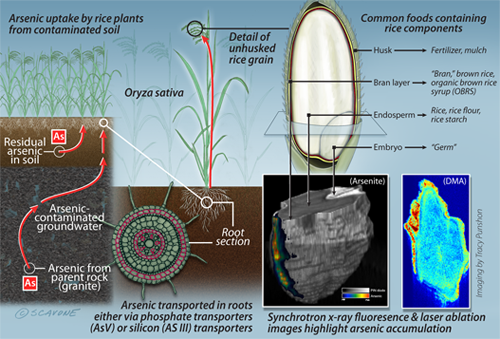
This image CAN be licensed for re-use by Kestrel Illustration Studio.
How may I purchase this image for use?
Arsenic in Rice
Naturally occurring environmental arsenic and arsenic from groundwater and soil contaminated by pesticides are readily absorbed by rice (Oryza sativa) cultivated for food. Arsenic follows the same transporter routes by which the rice plant acquires and incorprates phosphates and silicon.
Researchers at the Dartmouth Toxic Metals Superfund Research Program (SRP) are using several scanning technologies to pinpoint the highest concentrations of arsenic in rice.
Ironically, these transporter systems concentrate the arsenic in the "healthiest" part of the rice grain, the bran layer which is present in brown rice (unwashed white rice) and organic brown rice syrup, an ingredient in many baby foods.
This figure accompanied a Superfund Research Project grant proposal.
Adobe® Photoshop® & Adobe® Illustrator®.
© William Scavone. All Rights Reserved.
